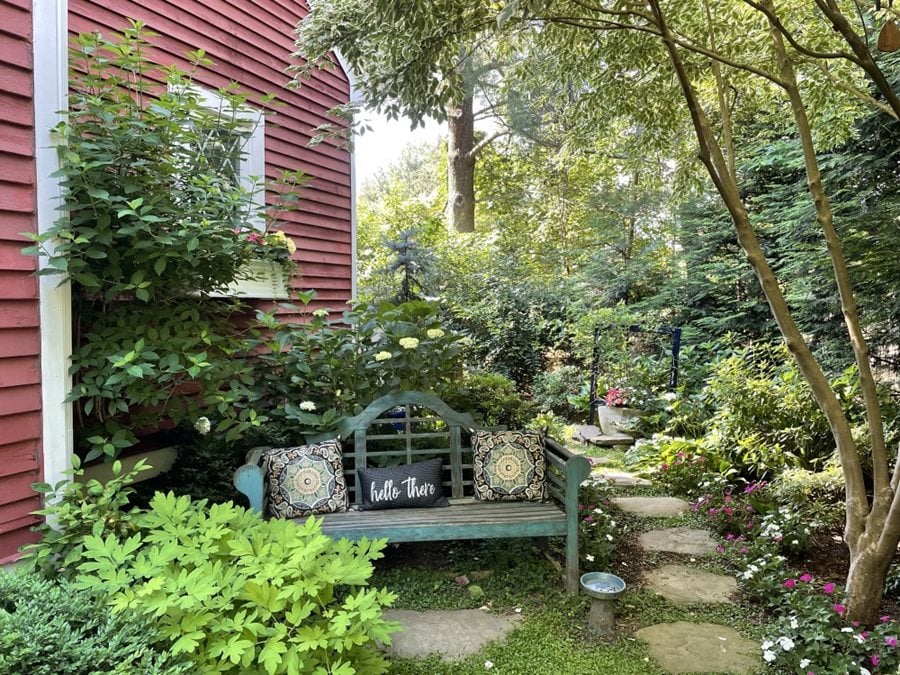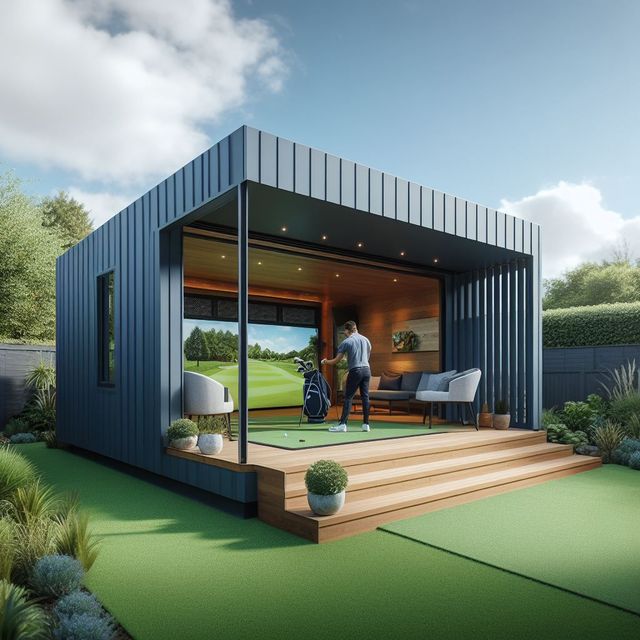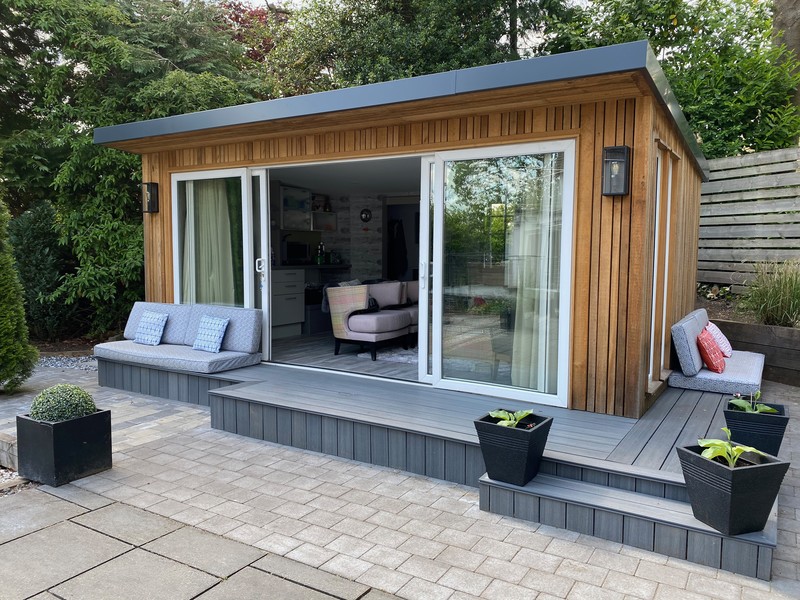Handy Tips On Planning Permission For Garden Outhouses
Handy Tips On Planning Permission For Garden Outhouses
Blog Article
What Planning Permission Are You Required To Get For Your Gardens, Etc. In Terms Of Size Restrictions?
If you're thinking of creating garden rooms, conservatories, outhouses and garden offices, size restrictions can often determine whether you need planning permission. Here's a brief overview of typical size-related factors you might need to consider when seeking permission to plan.
Planning permission will be required for detached outbuildings if it exceeds 50 percent of the total land space surrounding the house (excluding the footprint).
Height limitations:
One story buildings have a maximum eaves that should not exceed 2.5 metres, and for roofs with two pitches, or any other kind of roof it shouldn't exceed 4 m.
The height of buildings less than 2 metres away from the property's boundary must not exceed 2.5 meters in height.
Floor Area:
Building regulations may be required for structures that have a larger floor area over 30 square metres and even if planning permission is not required.
Limits of proximity:
If the structure is within 2 meters from a boundary it is usually required to apply for permission to plan for structures with a height more than 2.5 meters.
Building Use
While the size of the garden rooms isn't the only factor but their purpose can influence whether planning permission is required. Planning permission could be required when, for example the structure is designed to be used for commercial or residential space.
Permitted Development Rights:
Permitted Development Rights are governed by certain conditions and limits on size. The rights vary based on the kind of property that is located in a conservation area and/or subject to other limitations.
Extensions, conservatories and other conservatories of different types:
For a rear single-story addition The maximum amount is 3 meters or 4 meters, depending on the type of house, whether semi-detached or a terraced residence. This can be increased by 8 meters for detached houses and by 6 feet for semi detached or terraced homes, based on the circumstances.
The rear extension on a single-story house cannot be taller than 4 metres.
Side Extensions
Side extensions should not be any more than the original home and should not be over 4 metres.
Volume Restrictions:
In certain areas such as conservation zones, or Areas of Outstanding Natural Beauty an construction that exceeds 10% or increases the size by 50 cubic meters could require planning permission.
Front Extenders
Planning permission might be required to extend extensions beyond the original front of the home facing the street.
You should always make contact with your local planning authority for confirmation of the rules as they may differ based on the local council you reside in and the specific conditions of your home. Even if you don't need planning permission an approval for building regulations is still required to ensure safety and structural integrity. Have a look at the best how to install decking on grass for website examples including small garden office, costco outbuildings, outhouses for garden, what size garden room without planning permission, garden rooms brookmans park, outhouse builders, garden outhouse, luxury outhouse, what size garden room without planning permission, outhouse builders and more.
What Is The Environmental Impact Of Gardens, Rooms, Etc.?
The environmental impact of constructing gardens, conservatories, garden rooms or outhouses as well as extension and garden offices can significantly impact the necessity of the issuance of a planning permit. Here are the key environmental considerations to take into account The following are the most important considerations: Wildlife and biodiversity:
If the proposed structure would affect wildlife habitats within your region, like local trees, hedgerows and ponds, then you'll need planning permission. An ecological study may be needed to assess and limit the impact on biodiversity.
Habitats, Species and the Environment:
If the area is home to species that are protected (e.g. bats and newts) or is located within or near protected habitats (e.g., Sites of Special Scientific Interest : SSSI) Planning permission is vital. To protect them, special measures must be implemented.
Tree Preservation Orders
Planning permission is required if the proposed structure requires the removal of trees or the alteration of trees covered by TPOs. The local authority will evaluate the impact of the proposed structure and may recommend replacement trees or other mitigation measures.
Flood Risk and Water Management:
For developments in flood-prone areas or near water bodies, approval for planning is required. A study of the flood risk (FRA) might be required to ensure the structure is capable of draining and does not increase the risk of flooding.
Sustainable Construction Practices
Sometimes planning permission is needed to allow the usage and use of sustainable building materials as well as methods. This is a concern for energy efficiency, the carbon footprint of building materials, and insulation.
Drainage and surface water runoff
The most important consideration to consider for the environmental is how the proposed structure affects the drainage system and the runoff of surface water. Planning permission assures that proper drainage systems to stop waterlogging and flooding have been put in place.
Stability of the soil and stability of the land:
A permit for planning is required if the proposed construction may alter the stability of land or soil. Planning permission is required if the construction could impact soil quality or stability of the land.
Air Quality
Planning permission is required for any development that has the potential to negatively impact the quality of air in a particular zone, like those in close proximity to industrial areas or main roads. This ensures that air pollution levels are within acceptable limits and mitigation measures are in place.
Noise Pollution:
If the planned use of the garden room or extension will likely to cause substantial noise (e.g. or a workshop or music studio), planning permission is required. The local authority must assess the level of noise and possible impacts on neighbours and the environment.
Waste Management:
The proper disposal of waste throughout construction and afterwards is vital. Planning permission will ensure adequate provisions for recycling and waste management to reduce the environmental impact.
Energy Efficiency
The planning permission could include conditions for energy efficiency such as solar panels, high-performance glass or other green technologies. This helps reduce the negative impact of the new structure on the environment.
Environmental Regulations
Environmental laws and regulations are applicable to all developments which includes the UK Environmental Protection Act. Planning approval ensures that all requirements are met, in addition to the development being sustainable for the environment.
Summary: Planning permission for conservatories, gardens, or outhouses, as well as garden extensions and offices should be based on a variety of environmental effects. Talking with your local planning authority early in the process of planning is crucial to know the specific requirements and ensure that the proposed development is eco-friendly and in line with all applicable regulations. Follow the most popular can i build a garden room without planning permission for blog info including insulated garden rooms, garden out house, garden room heater, garden outhouses, outhouses, luxury outhouse, garden rooms in St Albans, garden buildings , garden rooms near me, out house for garden and more.
What Authorizations Are You Looking For To Build Garden Rooms Or Other Structures Related To Utilities And Infrastructure When It Comes To Planning?
If you are planning to construct an outdoor space, conservatory, outhouses (garden offices), or an extension, utility and infrastructure considerations will be essential. This can impact the need for a permit to plan. Here are key factors to take into consideration the water supply and drainage
A permit for planning may be required to connect an additional structure to water or drainage systems. The water authority in the area will need to determine if the structure's impact on the water supply system and the sewage system is acceptable.
Connections to gas and electricity:
If the building requires connection to gas and electricity A planning approval could be needed. It is crucial that these connections comply with the safety standards and building regulations.
Utility Easements
The proposed structure must be situated within utility easements (areas that are designated for infrastructure and utility lines), planning permission may be required. It might be necessary that the utility company in your area be able to approve construction within these areas.
Septic Tanks and Sewage Systems
If the proposed structure will require a septic system or an on-site treatment system for wastewater, planning permission will be required. These systems must comply with the environmental and health standards.
The drainage of Surface Water Management
A planning permit could be required to tackle surface water runoff and drainage from the construction. It may be necessary to implement measures that prevent flooding, erosive erosion and water pollution.
Access to Utilities for Construction:
Planning permission is required when temporary utility access (such water) is required for construction. The temporary connections are subject to safety and environmental rules.
Impact on local infrastructure
The local authority will evaluate whether the infrastructure in place can be used to support the growth. This includes roads, utilities, and public services. Local authorities must determine if existing infrastructure is able to support the new development.
Recycling and Waste Management
Planning approval can include conditions on waste management and recycle during and following construction. A proper plan for disposal of waste and recycling must be in place to reduce environmental impacts.
Efficiency in Energy Efficiency:
You might require approval to construct renewable energy systems such as solar panels or heat pumps in a new building. Conformity with building codes and environmental standards is essential.
Telecommunications, Internet and Connectivity
Planning permits are required for the construction of new structures which require telecommunications or internet connections. Conformity with requirements and standards regarding telecommunications infrastructure.
Access to the Road and Footpath:
You might require approval for the construction of new access roads or footpaths, or to modify existing ones. It is essential to comply with safety regulations and standards in the construction of footpaths and roads.
Accessibility to Public Transport:
Planning permission might be needed when the proposed structure has an impact on public transportation (such as bus stops or stations for trains). The public transport infrastructure must conform to all rules and standards.
In summary utilities and infrastructure aspects are essential in determining whether or not the need for a planning permit is necessary to build extensions, garden rooms outhouses, gardens offices. Consult the local authority for planning as early as possible during the planning stage to ensure compliance with relevant guidelines and standards. Have a look at the best garden office heating for website tips including garden rooms, garden room, garden rooms in St Albans, garden out house, insulated garden rooms, garden office electrics, garden out house, Tring garden rooms, costco garden buildings, garden rooms and more.